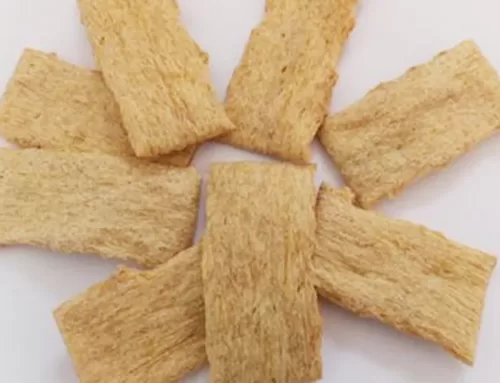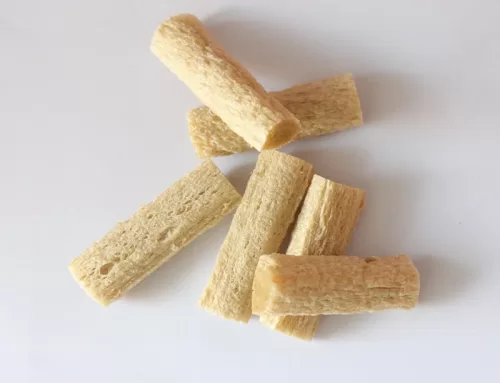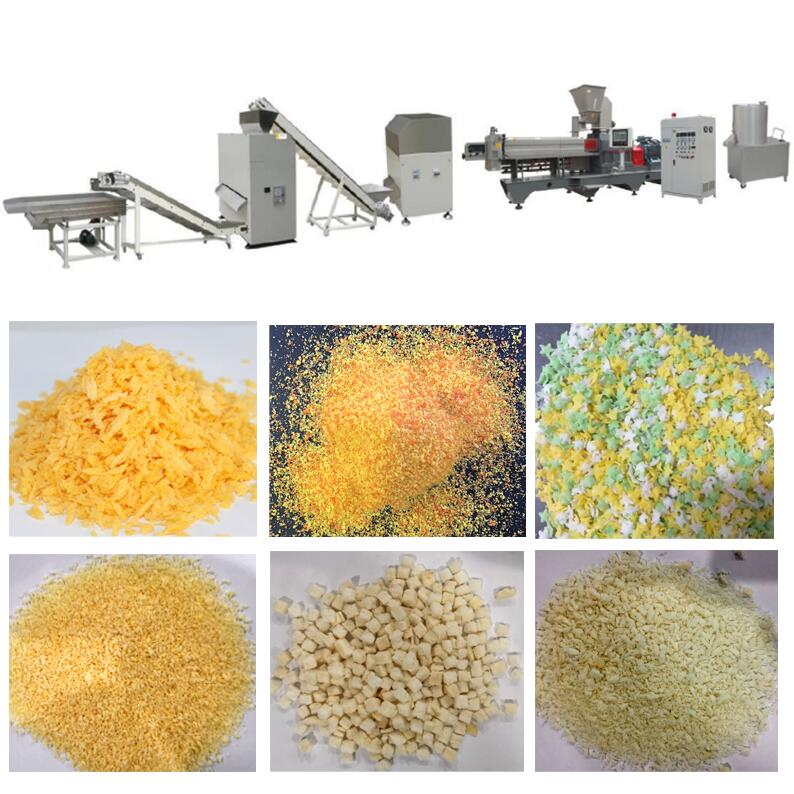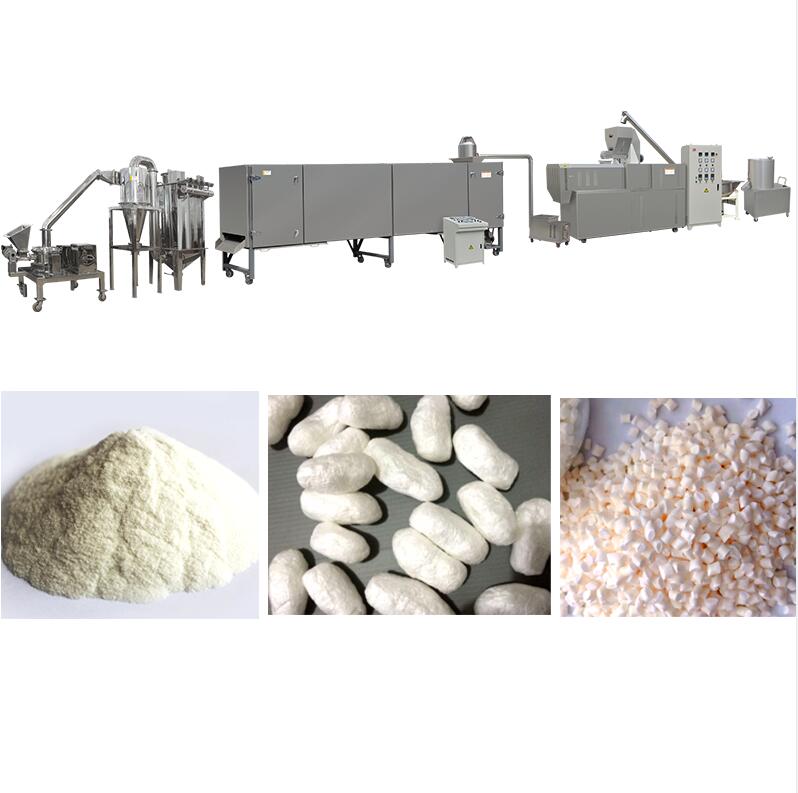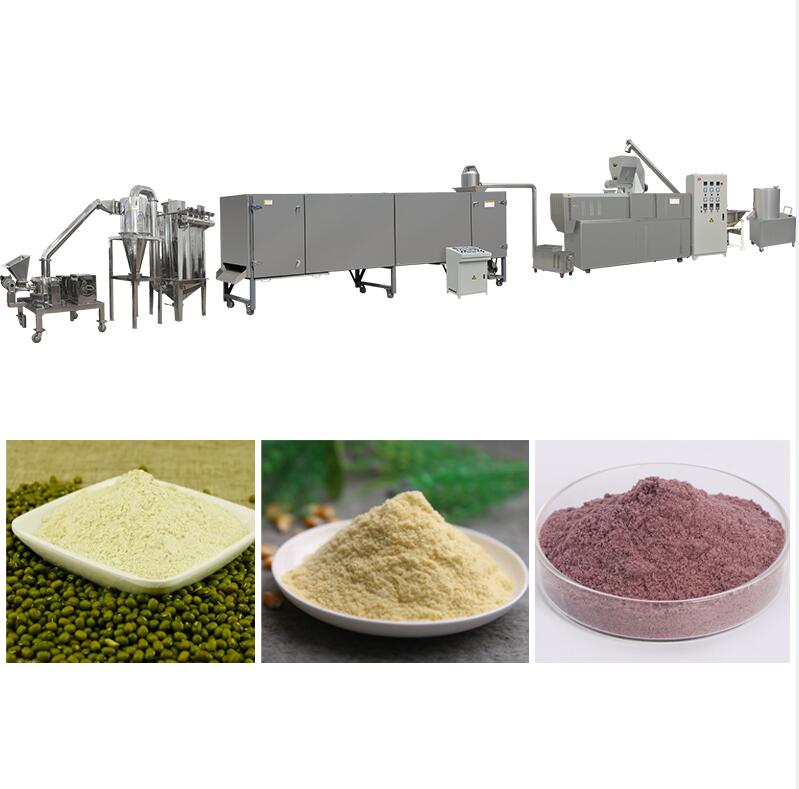250-300 kg/h High Moisture Extrusion Textured Vegetable Protein Making Machine
I. Introduction of High Moisture Extrusion Vegetable Protein
High moisture textured vegetable protein (also called HM-TVP) has a more obvious filamentous fiber structure than any other plant textured protein. Its fibrous structure is tightly arranged, which is more in line with the characteristics of meat. There is no need for secondary rehydration during use.
By matching different vegetable protein sources and grains, the HM-TVP production line can produce various plant-based meat analogs which resembles the desired fibrous-structure, bite and juicy mouth-feel, such as fifish meat, muscle meat, beef meat, etc.
The extrusion process of wet textured vegetable protein requires more water and oil, and the water is usually 50%-70%. Extrusion temperature needs be lower. It is therefore necessary to configure cooling channels to the extruder barrel – the protein mixture is extruded through a long cooling slit die (20-80ºC) to prevent moisture evaporation and thus maintain high moisture in the extrudate. After extrusion, the extrudate does not need to be dried, but refrigerated or frozen , or continued for further processing, such as seasoning and packing.
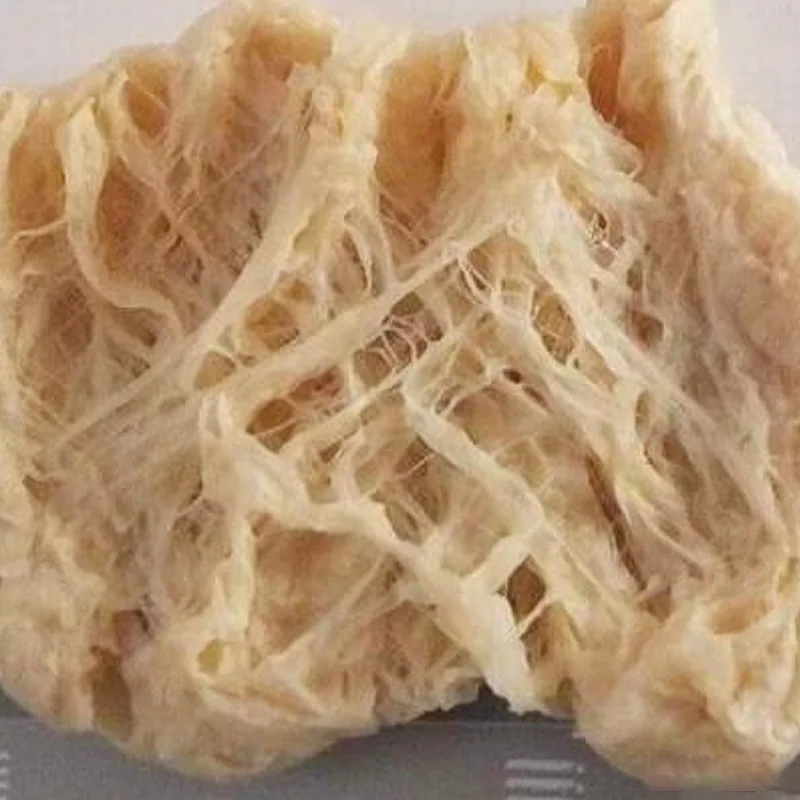
II. Parameters
| Capacity | 250-300 kg/h |
| Energy/Power | -Electric heating:
Installed power 304 kw -Other heating option: Natural gas/Diesel by burner or steam boiler |
| Installed Area | Around 400-500 square meters |
| Material | Single or combined material of defatted soya protein/wheat protein/peanut protein/pea protein etc. |
III. Features
- Finished Food Quality Ensured: Optimal extrusion solution, premium equipment design, and equipment processing ensure high-level and stable production.
- High Output: High designed capacity; minimal material loss;
- Less Energy: High mechanical coordination, low wear; optimized heating, thermal transfer& insulation details, low heat loss
- Low Production Cost: Flow production, precise control of each process
- Simple and Low Cost Maintenance: Modular structure, easy operation. Lifetime after-sales service
- Safe Material: High-quality food-safe materials for all food contact part
- Failure Rate: Nearly zero failure as long as preventive maintenance
IV. The General Flow Chart for High Moisture Extrusion Vegetable Protein
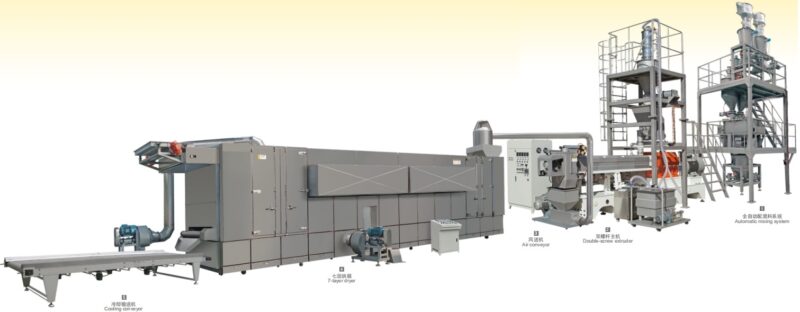
- Step 1: Crushing
- Step 2: Mixing
- Step 3: High moisture extrusion process with cooling
- Step 4: Seasoning(optional, it’s to produce flavoured textured veggie protein)
- Step 5: Cooling before packing
- Step 6: Packing
V. Components of High Moisture Extrusion Vegetable ProteinProduction Line
- Crusher
- Flour mixer
- Lengthened twin-screw extruder
- Chiller
- Vibration spreader
- Seasoning machine(optional, it’s to produce flavoured textured veggie protein)
- Cooling machine
- Automatic packing machine
- Controlling system (PLC/or instrument control options)
- Complete conveyors
- Diversity
The twin screw wet extrusion process can produce various fiber-structured vegetable proteins, with a wide range of raw materials including soybean protein, peanut protein, wheat protein, pea protein, sunflower protein, special protein, etc. Vegetable protein powder can also be mixed with other ingredients, such as tea polyphenols, rice, etc., to produce the HM-TVP that highlights certain properties.
- Flexibility
The quality of high-moisture vegetable protein fibrous structure depends on extrusion parameters. It includes temperature, moisture, feed rate, barrel temperature, shear, die pressure, die temperature and other processing parameters, which can be flexibly realized by setting on control system for different recipes.
- Various shape options
By changing different extrusion dies, you can produce high-moistured textured plant protein in various shapes, such as blocks, sheets, strips, etc. Dayi provides mold customization service.

